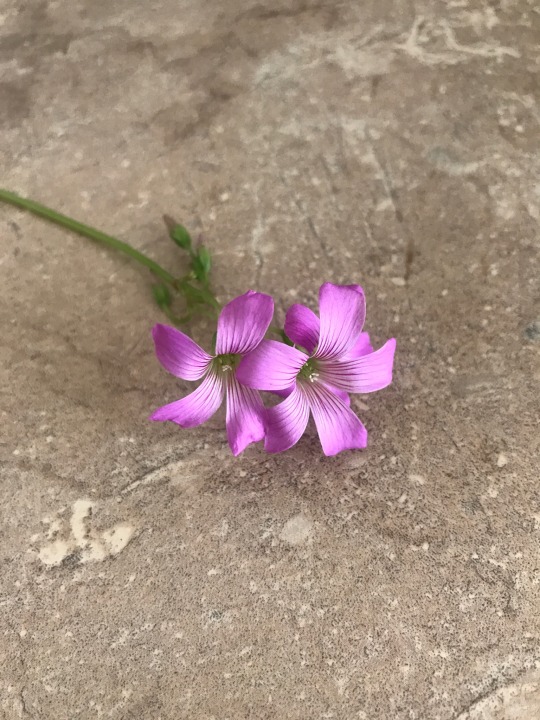#pink woodsorrel
Text
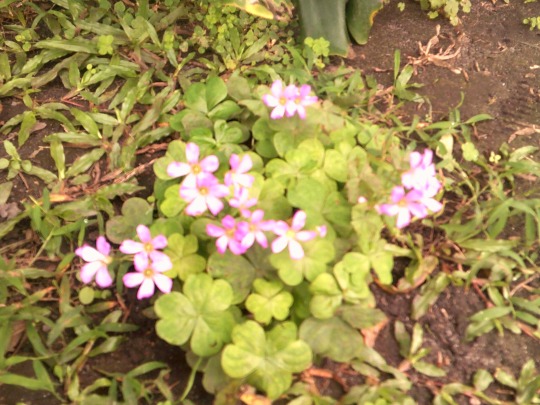

#mine#upload#flickr#photos#nature#plants#waterfall#flowers#pink woodsorrel#digicam#digital camera#digital photo#digital diary#visual archive#aesthetic#kickmebare
8 notes
·
View notes
Text

Oxalis crassipes 'Cherry Spritzer' / 'Cherry Spritzer' Pink Wood-Sorrel at the JC Raulston Arboretum at North Carolina State University in Raleigh, NC
#Oxalis crassipes 'Cherry Spritzer'#Oxalis crassipes#Cherry Spritzer pink Wood-Sorrel#Pink Wood-Sorrel#Oxalis#Wood-Sorrel#Pink woodsorrel#Woodsorrel#Sweet grass#Strawberry oxalis#Edible plants#Edible flowers#Flowers#Nature photography#Jc raulston arboretum#North Carolina State University#Ncsu#Raleigh#North Carolina#Raleigh NC
24 notes
·
View notes
Text
Clover vs. "Clover"
Clover's one of my favorite plants, and I thought that springtime would be the perfect time to clear up a common misconception about it!
so
This is not clover
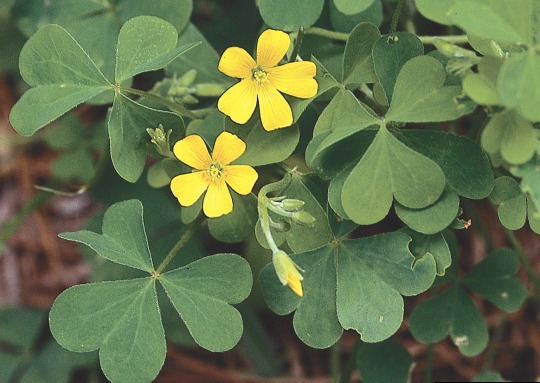
it's yellow woodsorrel! a very common weed (love weeds)
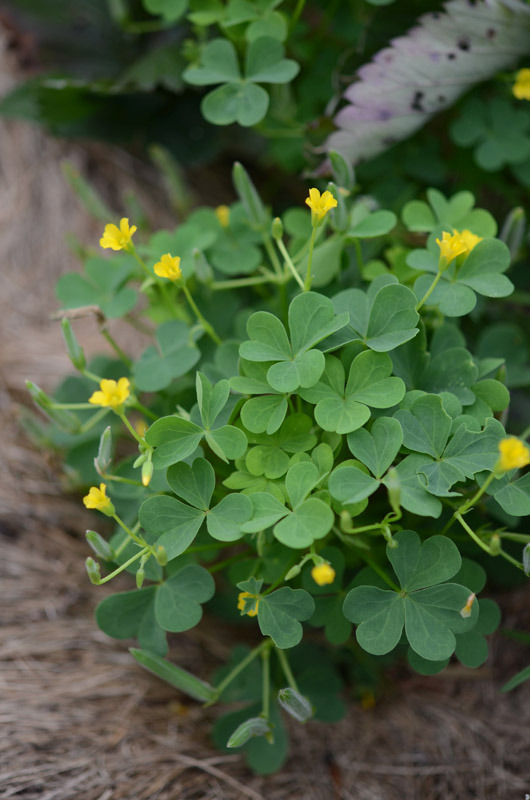

There's also other kinds of woodsorrel that are a bit rarer (at least where I live), like pink woodsorrel (or pink shamrock):
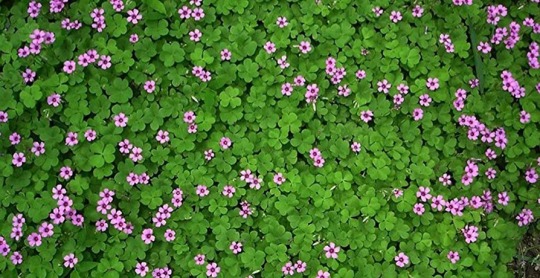
A lot of people see the shamrock leaves and assume it's clover (I know I did until my mom corrected me), but it's not!
This is clover
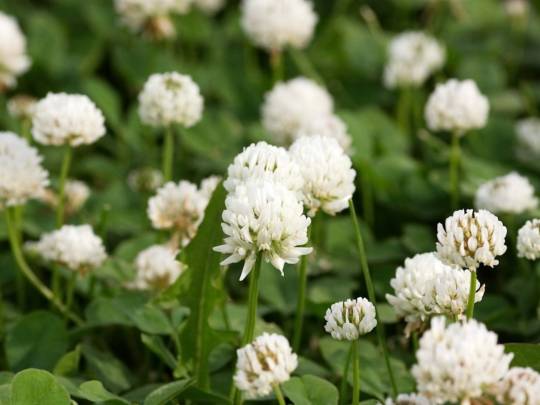
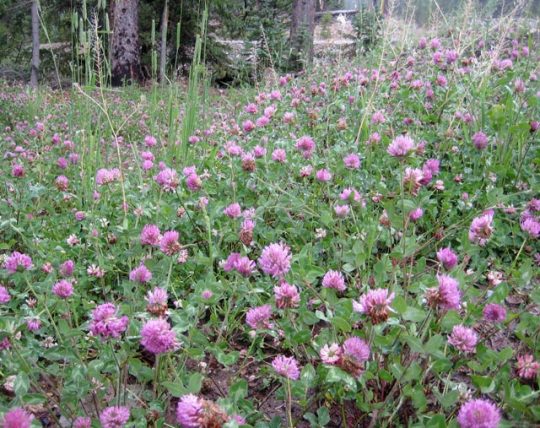
Look at those bulbous flower heads!!! I love it!!!!! And so do cows

It's only good for them as a grazing supplement though, too much clover can be toxic, so it shouldn't be their primary food source (even though they'd love it)
Anyway, this just to say that not all plants with shamrock leaves are clover, and nature's often more fun when you know what you're looking at
Happy Clover Season!
#clover#yellow woodsorrel#pink woodsorrel#shamrock#wood sorrel#plants#not-botany#not-scientific#flowers#spring#weeds#nature#mine
0 notes
Text
ムラサキカタバミ

2022.6.5
今の時期、公園や原っぱに紫の小さい花が咲いています。それはムラサキカタバミの花の場合が多いです。ちなみの紫片喰って書きます。
2年前の今の時期、コロナ禍でいろんな所が閉鎖されました。植物園や公園までもが閉鎖されてしまい、どこか撮りに行くことも気を使わなければいけなかった時に、ムラサキカタバミの鮮やかな紫色に癒されました。
春バラ、ハナショウブ、アジサイといった華やかな初夏の花を撮りに行けないストレスがあったんですが、近くの公園に咲いていたこの花が癒してくれました。
普段は見向きもしない花だったかも知れません。コロナがなかったら撮ってなかった花かも知れません。
考えてみれば、どんなところに出会いが転がっているか分かりませんよね。
公園に行ったら、この紫の花を探してみてください。
#ムラサキカタバミ#紫片喰#キキョウカタバミ#pink woodsorrel#Oxalis corymbosa#flowers#japanese flower#japanese flowers#flower
1 note
·
View note
Text
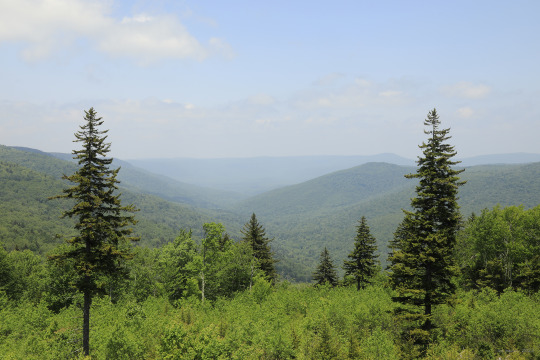



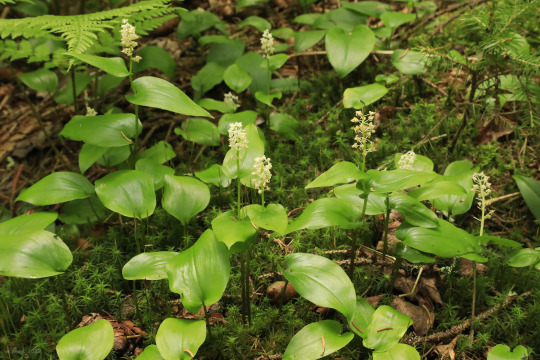

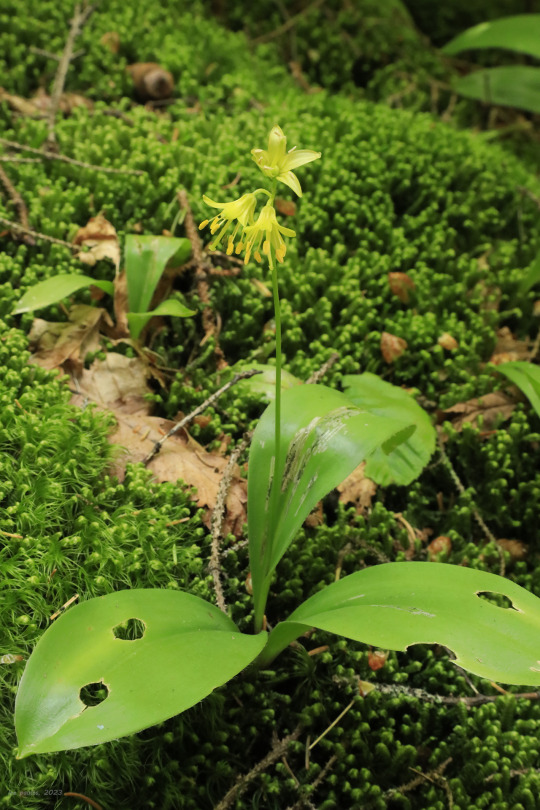
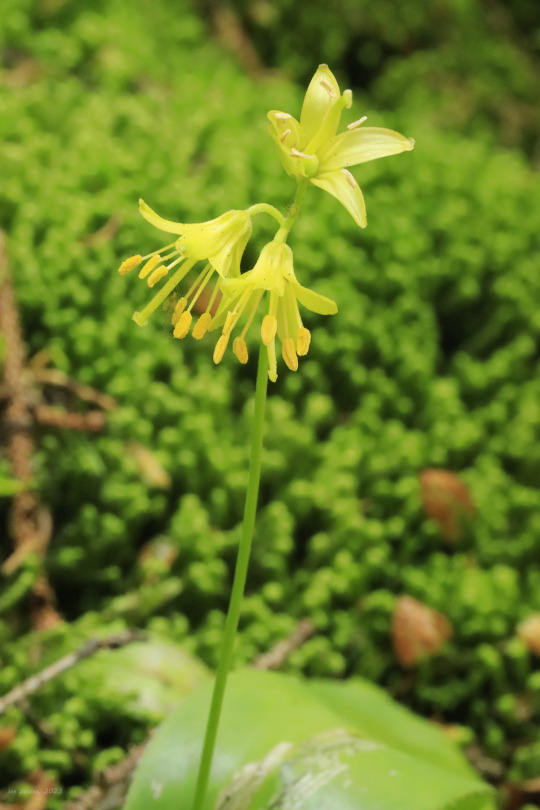





Walk with me: Visit to a high-elevation red spruce forest. The red spruce (Picea rubens) forest on top of Red Spruce Knob, the ninth highest peak in West Virginia, provides a bittersweet glimpse back in time to the primeval beauty and solitude of such places prior to the arrival of the logging companies in the mid-Nineteenth to early Twentieth centuries. The loggers stripped the mountains bare and set in motion the massive wildfires that burned away everything, including the soil itself, down to solid bedrock. Almost a century later, the forest is regenerating and in some places, such as Red Spruce Knob, has regained the richness and vitality of a healthy boreal ecosystem.
From top: a view of Red Spruce Knob, in the far distance, from the Highland Scenic Highway overlook; Canada mayflower (Maianthemum canadense), a ubiquitous understory component of the forest, along with mountain woodsorrel, yellow clintonia (a.k.a. blue-bead lily), hobblebush viburnum, Indian cucumber, green false hellebore, and various mosses and ferns; yellow clintonia (Clintonia borealis) in bloom; pink lady's slipper (Cypripedium acaule); green false hellebore (Veratrum viride) on eastern hay-scented fern (Dennstaedtia punctilobula); and mountain woodsorrel (Oxalis montana).
#appalachia#vandalia#west virginia#wildflowers#spring#flora#allegheny mountains#monongahela national forest#red spruce knob#highland scenic highway#red spruce#canada mayflower#yellow clintonia#blue-bead lily#pink lady's slipper#false green hellebore#eastern hay-scented fern#mountain woodsorrel#mountain wood-sorrel#boreal forest
208 notes
·
View notes
Text
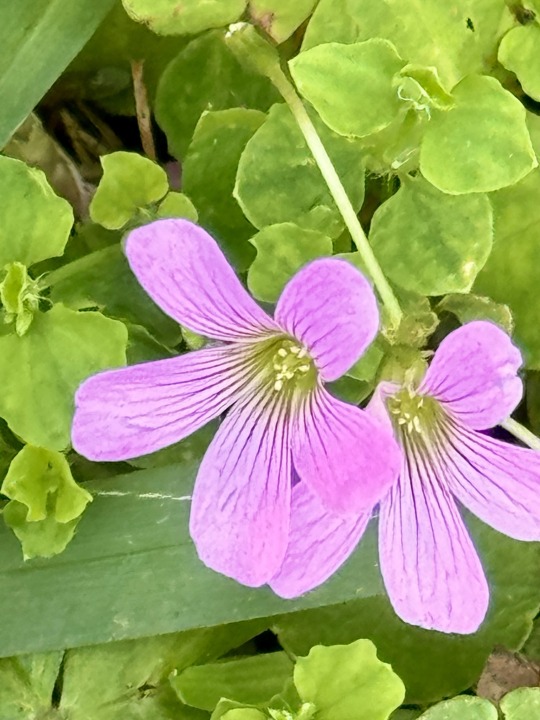

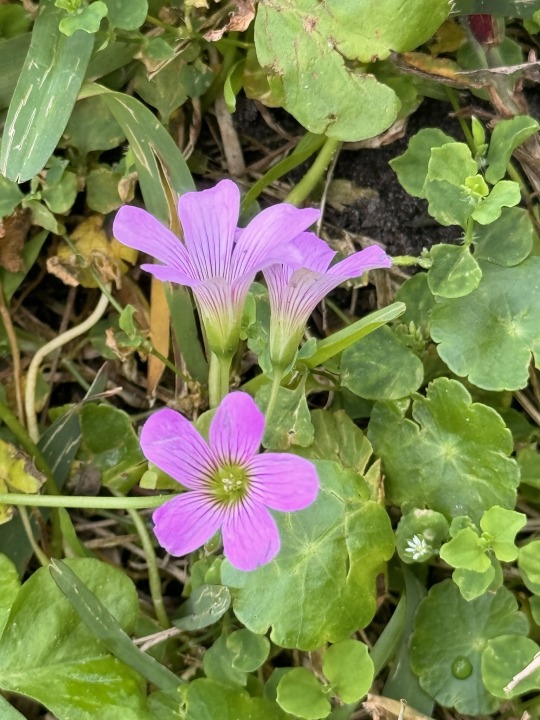
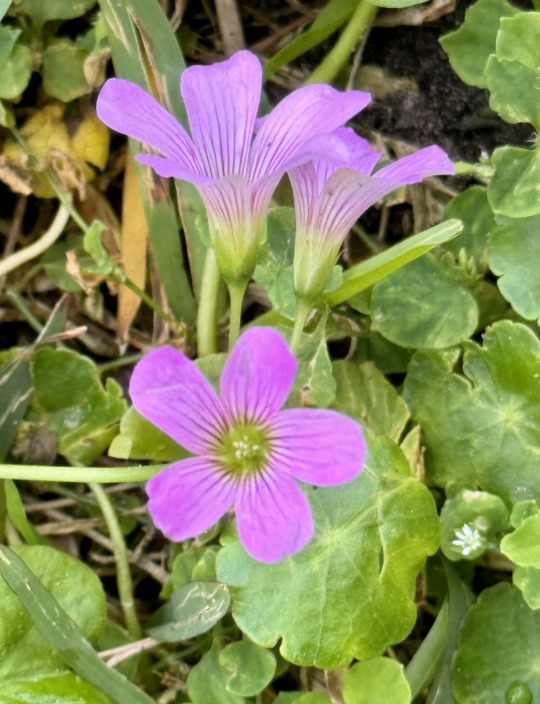
📷 Fred Common, Hobbyist Photographer
🦋 Pink Woodsorrel, small flower with big beautiful features. — Sunday, March 3, 2024.
#photographers on tumblr#flowers#my photgraphy#original photography#annlynngilbertphotography#my flower photography
46 notes
·
View notes
Text
Your Melody & hanakotoba (language of flowers)
during the voice drama watch party livestream, hyuga (rimicha's seiyuu) mentioned the meaning of the sunflowers in the pv and how they may relate to his feelings for kirimi-chan. knowing that (and that hanakotoba seems to have some differences here and there) i decided to go down the rabbit hole
disclaimer: i don't know anything about flowers and guessed for some of them, also most of the sources (listed at the bottom of the post) seem to be wikis of sorts run by either a single person or a small group of people
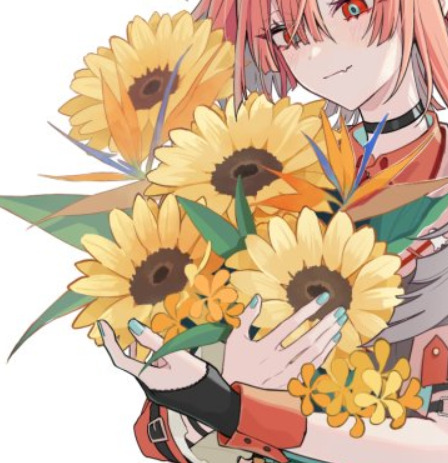
Rimicha
Sunflowers (ヒマワリ/himawari): As mentioned by Hyuga in the voice drama watch party livestream, they tend to mean "I'm looking at only you" and symbolise "longing".
Strelitzia reginae/bird of paradise flowers (極楽鳥花/gokuraku chouka): Pretty hard to translate, but according to my sources, it carries a negative connotation. The best it can probably be translated as is "a love which you are trying to show yourself bigger and better", according to my sources. (To be clear, what's being translated is 気取った愛, which the machine translation didn't give any clues for what it might mean, and a dictionary was somehow even more confusing.)
Oxalis corniculata/creeping woodsorrel (カタバミ/katabami): I honestly don't know if these are the right flowers, but they're the best guess I have for the small yellow flowers at the base of the bouquet. It seems to symbolise "a shining heart" and mean "to be with you".

Hallritt
Geraniums (ゼラニウム/zeraniumu): I can't tell what type of geraniums they could be, but that doesn't seem to matter in hanakotoba anyways. Red geraniums in particular can represent "friendship", "determination", and "solace", and can carry the meaning "happiness when you're there".

Merold
White roses (白いバラ/shiroi bara): Generally represents "purity" (in the "innocent" sense) and "heartfelt respect". It can have the meaning "I am suitable for you", but it seems it can also mean something like "beauty is your only appeal", which is... interesting.
Pink roses (ピンク色のバラ/pinku iro no bara): Seems to represent meanings like "kind heart", "satisfaction", "promising" (in the sense that one could have a "promising future"), and "elegance". It can also mean "first love" or "to be deeply moved".
White lilies (白いユリ/yuri): Again can represent "innocence", but can also represent "unmarked beauty" or "magnificence". It can also mean "a noble personality". (As a sidenote, I think people generally assume you mean a white lily if you just say "yuri".)
Pink lillies (ピンク色のユリ): Much easier than the above, but funnily enough can mean "insinuations" or "words or behaviour that hints at a deeper meaning", and "vanity".
Asters (アスター/asutaa): White asters tend to represent "change" or "reminiscing", and can also mean "a heart that has faith".
Lupinus (ルピナス/rupinasu): They seem to represent "the (power of) imagination" or "being greedy", which is an interesting difference. They can also mean "always content" or "you are my comfort". The last one's kanji can also mean "peace of mind" or "tranquility", so that's what "comfort" means there.
Calluna vulgaris/heather (カルーナ/karuuna): My best guess for the smaller, darker pink long flowers. This one doesn't have many sources for hanakotoba I can find, so the meanings are probably nonexistant, but a few sites I can find are claiming it can mean "self-reliance", "integrity", and "departure".
Loropetalum chinense (白いトキワマンサク/shiroi tokiwamansaku): The best guess I have at the little white flowers with slim petals. This is another one where I had to go digging for other sources for the hanakotoba, so it might just be all made up. Anyway, it can represent "inspiration" or "mysterious powers", or mean "good luck charm" or "I want to love you" (not entirely sure about the last one).
Gypsophilia/baby breath (かすみソウ/kasumi sou): The very small white flowers (notable at the bottom of the bouquet). This is a later edit because someone I know figured it out. Anyway, white baby breath represent "a calm heart" or "a pure heart".
Sources:
https://hanakotoba-note.com/
https://www.hana-navi.net/
http://www.hanakotoba.name/
Specific sources for calluna vulgaris:
https://lovegreen.net/languageofflower2/p282431/
https://hanasaku-gift.com/language-of-flower/caruna-floweringword
Specific source for loropetalum chinense:
https://hananoiwaya.jp/%E3%80%8C%E3%83%88%E3%82%AD%E3%83%AF%E3%83%9E%E3%83%B3%E3%82%B5%E3%82%AF%E3%83%99%E3%83%8B%E3%83%90%E3%83%8A%E3%83%88%E3%82%AD%E3%83%AF%E3%83%9E%E3%83%B3%E3%82%B5%E3%82%AF%E3%80%8D%E3%81%AE%E8%8A%B1/
Other sources for translation help:
Literally just a Japanese person I know
#fragaria memories#picking apart fmm with my bare hands#i'm also interested in the fact that both EVER RED and your melody have a clock ticking in them#fmm talk#if you can't tell i enjoyed the livestream a lot
23 notes
·
View notes
Text
I don't mow my lawn (except weed whacking tall things to keep within city regulation) and my lawn is filled with so many nice low growing flowers now 🥹😭 yellow and pink woodsorrel, blue eyed grasses, lyreleaf sage, rockbells...
5 notes
·
View notes
Text
apparently pink woodsorrel is edible, like, the whole plant, and has bulbs! so I'm gonna dig some up tomorrow. and it can just go in a cage to prevent it from shooting seeds elsewhere.
apparently the leaves have a "zesty lemony" taste.
3 notes
·
View notes
Text

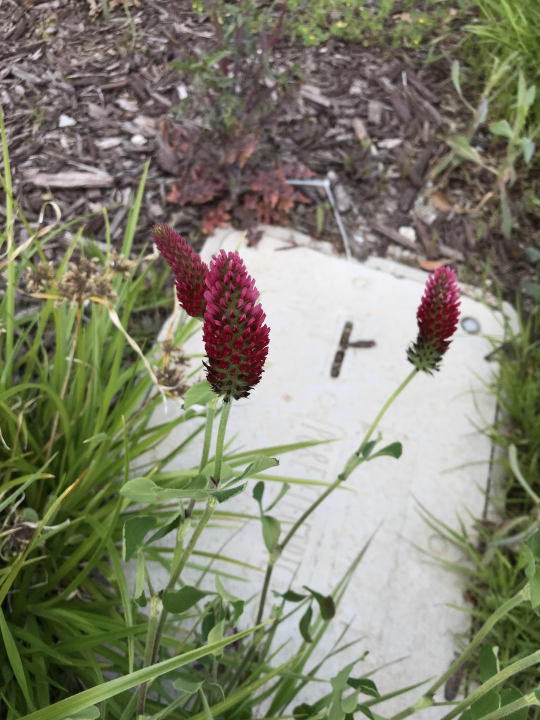
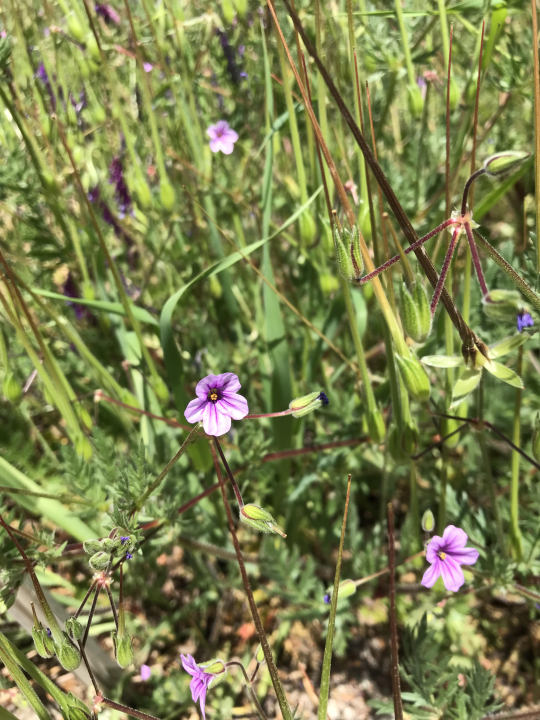
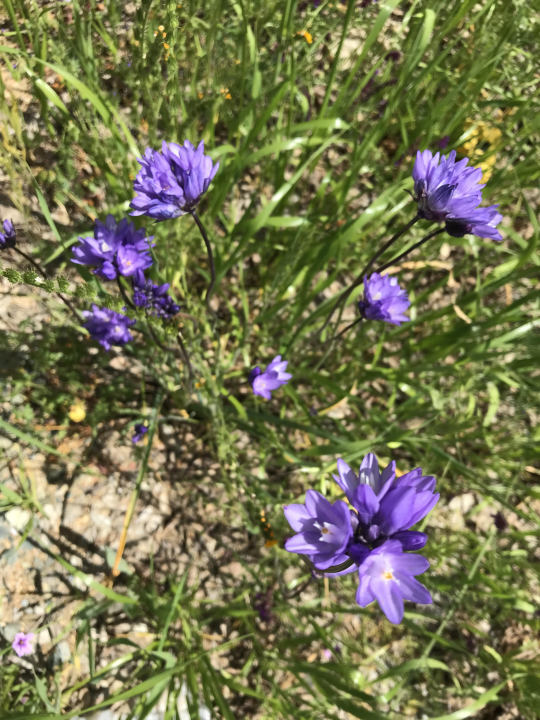

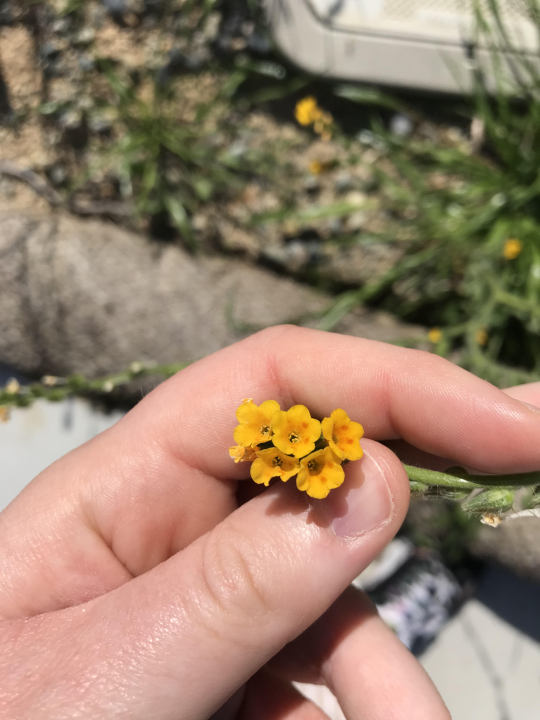
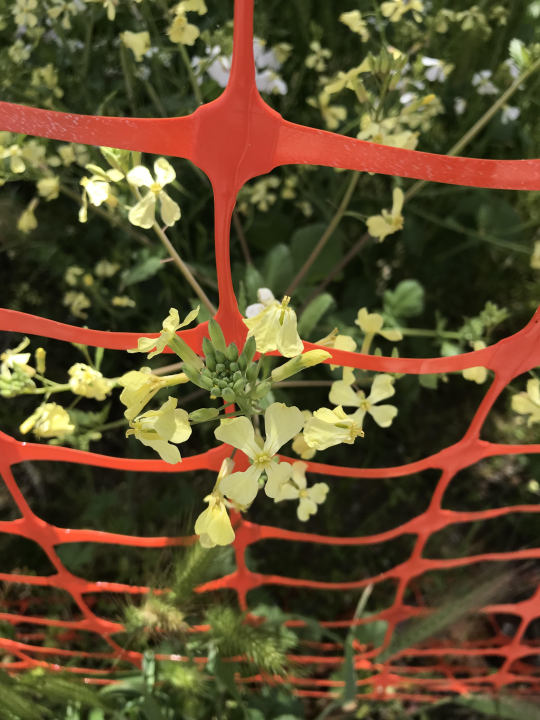
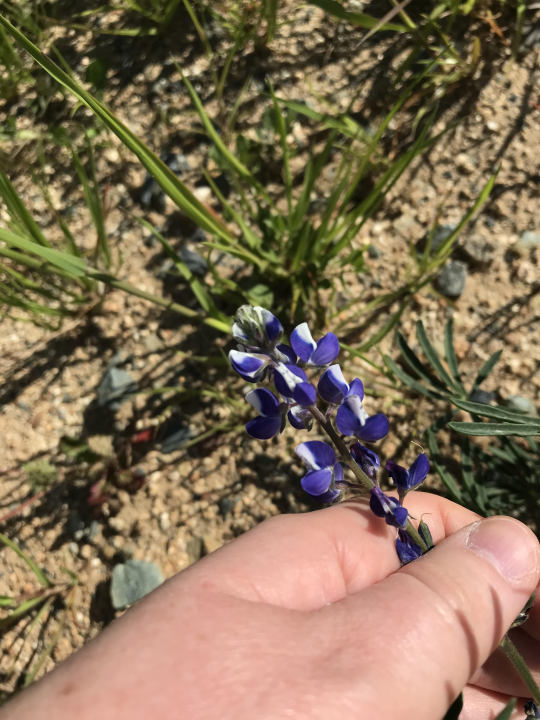
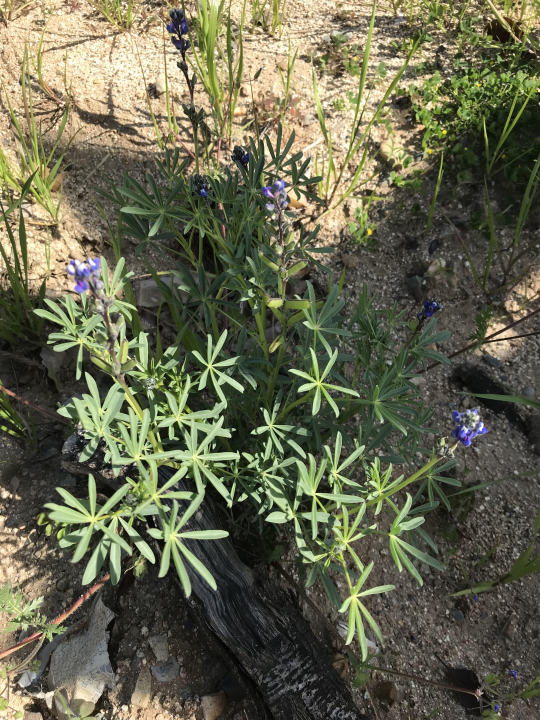
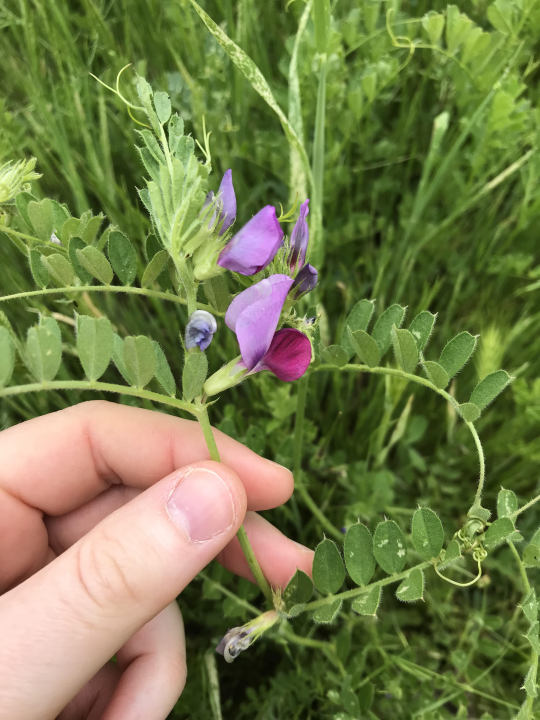
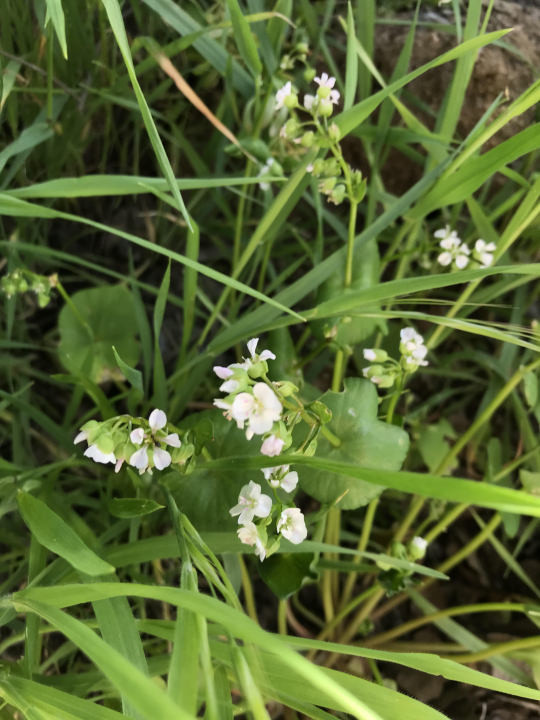

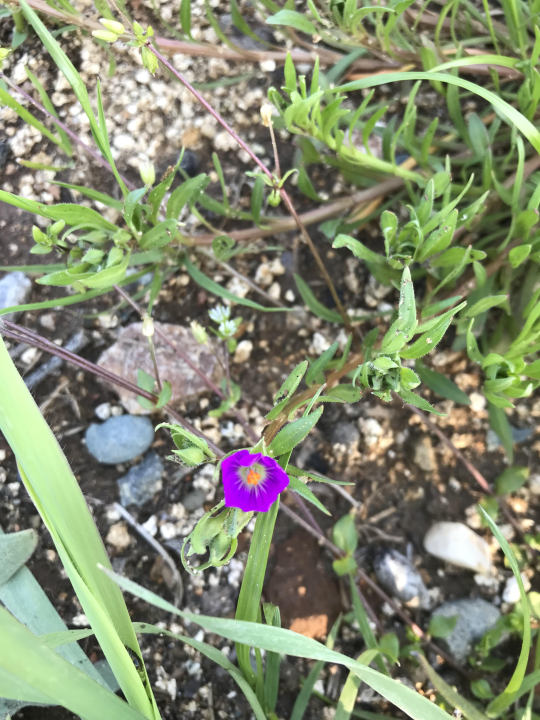
Flowering 'Weeds' in my Neighborhood
Hello and welcome to my informal tour of some of the flowers in my California neighborhood. I just wanted to identify them when I got home so I made this post. We tend to take these plants for granted but I wanted to learn more about them. Forgive the photo quality, my phone is a potato but I am upgrading it soon. (Also I was being kind of lazy with these photos, since it was just for IDing and not for looks)
1.) Yellow Woodsorrel (Oxalis stricta or Oxalis corniculata)
These itty bitty yellow flowers (and clover-like leaves) often found in lawns are apparently woodsorrels, in the genus Oxalis. The flowers are around the same size as Scarlet Pimpernell (Anagallis arvensis), another little flower often found growing in lawns around here. Plants in this genus are edible, apparently, and have a nice sour tanginess to them. All parts are edible and can be eaten raw or cooked, and are nice in salads, I'm told.
It seems the plants in this genus have a wide range of flower sizes, because this genus also includes Oxalis pes-caprae, which has the same clover-like leaves, but it has yellow flowers that are ~1 - 1.5 inches large, which grow on long stalks. This species is known colloquially as Sourgrass where I'm from, and as a kid I often picked the flowers to chew on the sour stems. Plants of this genus are often invasive here, but there are also lots that are native to California.
2.) Crimson Clover (Trifolium incarnatum) - Invasive
Often used for erosion control (even though it out-competes other plants, including natives), for feeding livestock, or as a nitrogen-fixing cover crop. The seeds, sprouts and flowers are edible for humans, too. The red flowers are very beautiful and bees love them.
3.) Long-beaked Storks Bill (Erodium botrys) - Invasive
Another common sight in California yards is the Storks Bill, named after the long, pointy seed pods that look like little spears. My mother passed on the suburban lore to me and my little brother when we were kids, explaining how you can push one of these pointy seed-pods into another one and create a pair of scissors with them. Therefore we referred to these as "scissors plants." However, the plant's seed pods are most interesting when they break open explosively. The seeds that immerge look like sharp little corkscrews that bury themselves in the earth. This plant is reportedly edible, and typically the leaves are eaten when the plant is young. The plant has pretty little pink/purple stripey flowers in the spring.
4.) Blue Dicks (Dipterostemon capitatus) - Native
A beautiful California native wildflower. It has a history of being an important food source for Native Americans. The part eaten was the 'corm,' which is similar to a tuber and also starchy. There is a similar-looking native flower called Forktooth Ookow (Dichelostemma congestum) but this site shares how to tell them apart.
5 - 6.) Common Fiddlenecks (Amsinckia menziesii) - Native
These pretty yellow flowers grow in clusters that gradually unfurl like the neck of a fiddle. Goldfinches love the seeds and it's an important host plant for some insects; its flowers are also valued by pollinators.
They are unpalatable plants to livestock (they have itchy hairs), which is good because they are toxic to livestock if eaten in large amounts. (This typically will not happen unless their feed becomes contaminated with it, since as I mentioned, they dislike eating the plants!) It's probably best that humans don't try to eat this plant, as a result. It's also best to not grab these plants like I did in the photo, haha, because the hairs can irritate skin. (Didn't bother me, but ymmv)
7.) Wild Radish (Raphanus raphanistrum) - Invasive
This plant is in the mustard family (Brassicacea). As you may know, the mustard family is very important to humans, and includes a bunch of cultivated crops (cabbage, broccoli, kale, turnips, radishes, etc). As such, all parts of this plant are very edible, and it has a reportedly peppery taste. It's invasive here in California so you don't need to feel bad about harvesting it. They also hybridize readily with cultivated radish. It's a very hardy plant that has spread all over. You see these guys everywhere, in ditches on the side of the road, etc.
8 - 9.) Lupines/Blue Bonnets [possibly Coulter's lupine (Lupinus sparsiflorus)?]
This genus, the Lupins, is a very large genus and many of the varieties have been cultivated by humans for both food and for looks. However, some varieites are native to California, such as Coulter's lupine. They are very pretty flowers that look similar to pea plants, because it is in the same family (Fabaceae). Lupin beans are edible but need to be processed correctly first, or else they can poison you (the same is true of many popular legumes). The ones that have been bred for eating require less processing.
10.) Common Vetch (Vicia sativa) - Naturalized
Another wildflower in the same Fabaceae family, Vetch also has gorgeous little purple flowers and produces little pea pods too. It's valued as livestock fodder and as green manure/rotation crop, and like the Lupins, its seeds need to be processed properly before humans eat it. The plant is very 'grabby' and will use plants nearby to help prop it up as it grows. So, if you have something else in your garden, you might need to pull out vetch if it's grabbing your plants.
11.) Miner’s Lettuce/Spring Beauties/Winter Purslane (Claytonia perfoliata) - Native
This native plant has big, cronchy leaves that I'm told taste excellent in salads. They tend to grow after a good rain, during winter or early spring, in damp, shady areas. The plant had been used as food by Native Americans for a long time, and when white people arrived in droves in California for the gold rush, they ate it too; thus the name 'Miner's Lettuce.' Their leaves kind of look almost like lily pads, and little white flowers grow in the center. They're quite recognizable once you notice them, and they're very nutritious, apparently.
12.) Burr Clover/Burr Medic (Medicago polymorpha) - Naturalized
Considered useful for livestock fodder, erosion control and soil improvement. It has little yellow flowers and its seed pod is a pokey little burr. It grows very low on the ground, often found in lawns. It's edible, especially the young leaves. The seeds are apparently edible too but there's only one seed per burr and it's rather demanding to gather and process, as you might imagine.
13.) Red Maids (Calandrinia menziesii) - Native
I found this lone little flower among all the other wildflowers around here after the rains. Apparently it's a Red Maid, which used to be considered a type of purselane, but has recently switched families, according to Wiki at least. The greens can be cooked and the seeds toasted.
2 notes
·
View notes
Text
Nature Memo #1
I decided to go on a little adventure over the weekend since I had three days off (I generally work on the weekends and am almost always on-call for crisis situations). I picked up a new journal so that I could collect plant samples and press them. I've been intending to do this for way too long (2011) but have not gotten around to doing it until now.
I find nature to be mesmerizing and way too often taken for granted. Parks are great, and those with unpaved nature trails are even better. But even then, they are taken for granted.
In any event, below are the list of observations that I made. This is incomplete because I did not include the trees and shrubs that were observed. Of the 29 listed items below, 10 were ones that I had not previously recorded, so I'm pretty excited about that. The total number of living species (plants, insects, birds, reptiles, fungi, arachnids, mammals, fish, mollusks, amphibians, and other species) that I have recorded (as in, photographed, dated, and confirmed the species of) is now 276.
Plants observed (all pressed!)
Oxalis triangularis, False Shamrock
Narcissus poeticus, Poet’s Narcissus
Achillea millefolium, Common Yarrow
Muscari neglectum, Grape Hyacinth
Galium aparine, Catchweed Bedstraw
Stellaria media, Common Chickweed
Oxalis violacea, Violet Woodsorrel
Vinca minor, Lesser Periwinkle
Bowlesia incana, Hoary Bowlesia
Narcissus tazetta, Bunch-flowered Daffodil
Veronica persica, Bird’s-eye Speedwell
Valerianella locusta, Common Cornsalad
Allium vineale, Wild Garlic
Cardamine hirsuta, Hairy Bittercress
Ranunculus hispidus, Bristly Buttercup
Ornithogalum umbellatum, Common Star-of-Bethlehem
Houstonia pusilla, Tiny Bluet
Viola bicolor, American Field Pansy
Claytonia virginica, Virginia Spring Beauty
Insects observed
Camponotus pennsylvanicus, Black Carpenter Ant
Papilio rutulus, Western Tiger Swallowtail (Butterfly)
Coleomegilla maculata, Spotted Pink Ladybeetle
Polistes Carolina, Red Wasp
Eurema lisa, Little Yellow (Butterfly)
Celastrina ladon, Spring Azure (Butterfly)
Amphibians observed
Pseudacris crucifer, Spring Pepper (Frog)
Fungi observed
Trametes versicolor, Turkey-tail
Cladonia evansii, Evan’s Deer Moss
Arachnids observed
Oxyopes salticus, Striped Lynx Spider
Next step is to let the pressed plans dry, followed by labeling, dating, notes on GPS coordinates for each sample, as well as information on whether it it is edible, seasonal growth, and if I am feeling particularly brave I will attempt to draw them.
All of these samples were taken in Arkansas between Siloam Springs, Pea Ridge National Battlefield, and Bella Vista.
#plants#pressing plants#hiking#arkansas nature#oklahoma nature#pea ridge national battlefield#insects#fungi#arachnids#amateur naturalist#biology#personal#nature memo#nerd#nerd alert#nerd stuff
2 notes
·
View notes
Text
#1932 - Oxalis articulata - Shamrock Oxalis

Photo by @purrdence in Waipukurau, NZ. Unfortunately it’s another introduced weed.
AKA Oxalis floribunda, Oxalis purpurata, Chari amilo (Nepal), Netho (khatta) saag (India), bent wood-sorrel, bent woodsorrel, jointed woodsorrel, oxalis, pink oxalis, pink sorrel, pink wood sorrel, pink-sorrel, shamrock, and sourgrass.
Originally native to Brazil, Argentina, Paraguay and Uruguay but now naturalised in many parts of the world including SE Australia. It was introduced to Europe as an ornamental, but is eaten for the Vitamin C content in parts of India, and elsewhere as a groundcover that uses allopathic leachates to suppress the growth of other plants.
Vulnerable to the rust fungus Puccinia oxalidis.
3 notes
·
View notes
Text
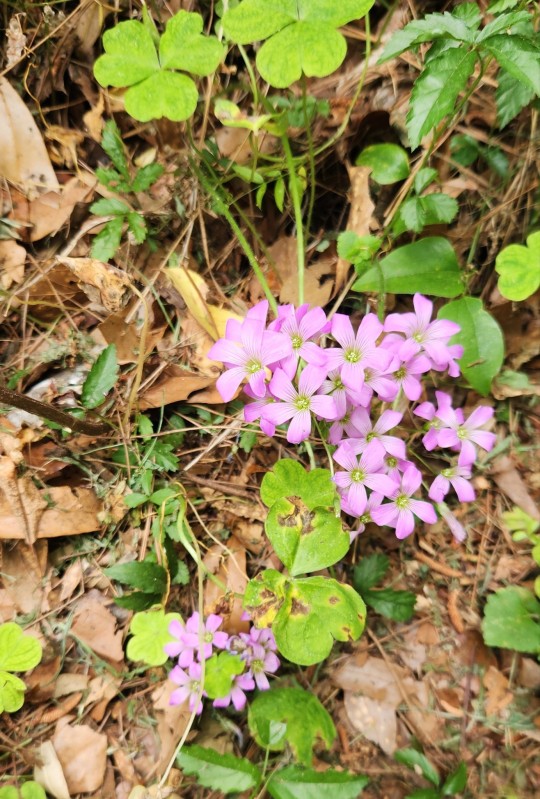
Oxalis corymbosa DC, or Lilac Oxalis. We call it Pink Woodsorrel 'round here. 🌱🥬🌸Delicious ornamental addition to mixed green salads!
0 notes
Text
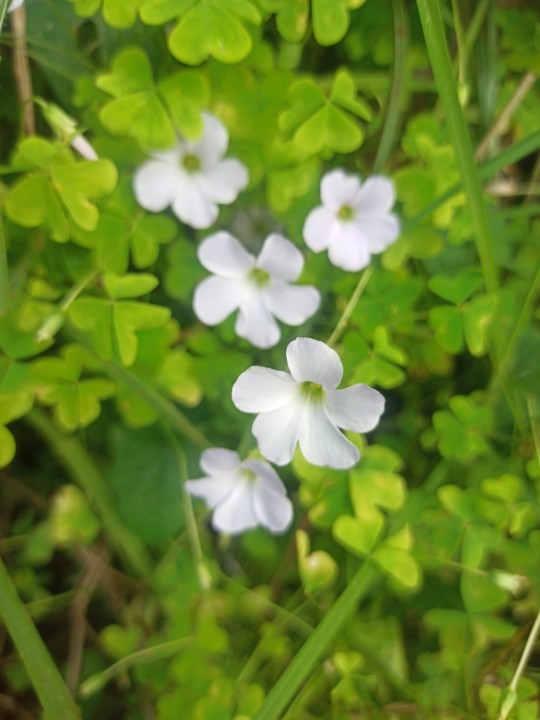
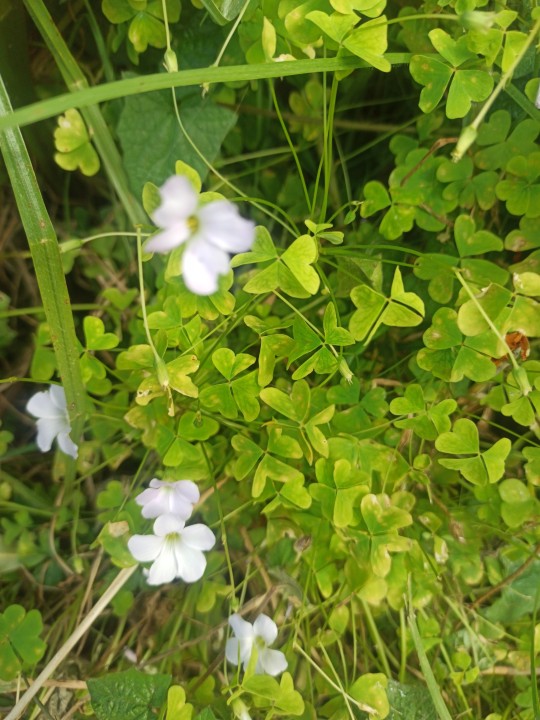

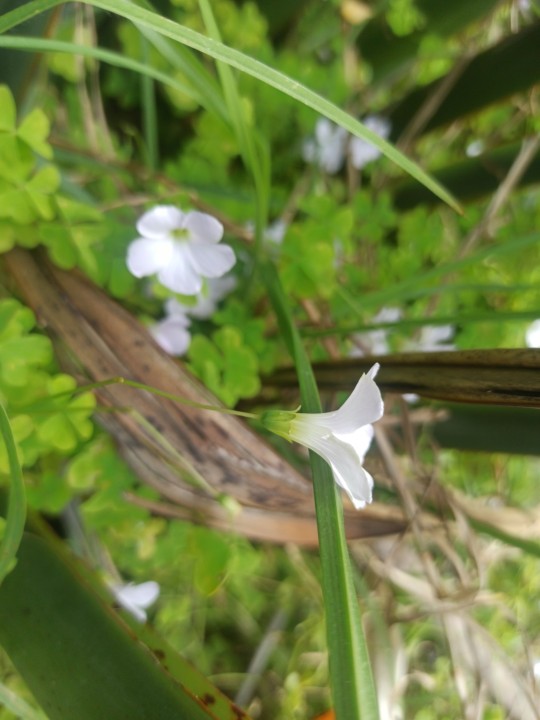


Oxalis incarnata - Pale pink-sorrel, Wood sorrel is a species of flowering plant in the woodsorrel family known by the common names pale pink-sorrel and crimson woodsorrel.
It is native to southern Africa.
Clade:Rosids
Order:Oxalidales
Family:Oxalidaceae
Genus:Oxalis
Raw, the leaves and stalks have a bright, sour taste. You can use them in both sweet and savoury dishes.The leaves and flowers are nice tossed in a green salad, and the flowers make a good edible garnish.
для охлаждения и снижения температуры, для восстановления аппетита и в качестве полоскания при язвах во рту.
North Shore, Browns Bay, Auckland 0630
7PMQ+FVH Auckland
-36.7163170, 174.7397280
наземные растения, цветковые, съедобные травы
0 notes
Photo

Pink #woodsorrel #sorrel #flowers #flowerstagram #flowersofinstagram #taipei #taiwan https://www.instagram.com/p/Cl1V-3vpcCv/?igshid=NGJjMDIxMWI=
0 notes
